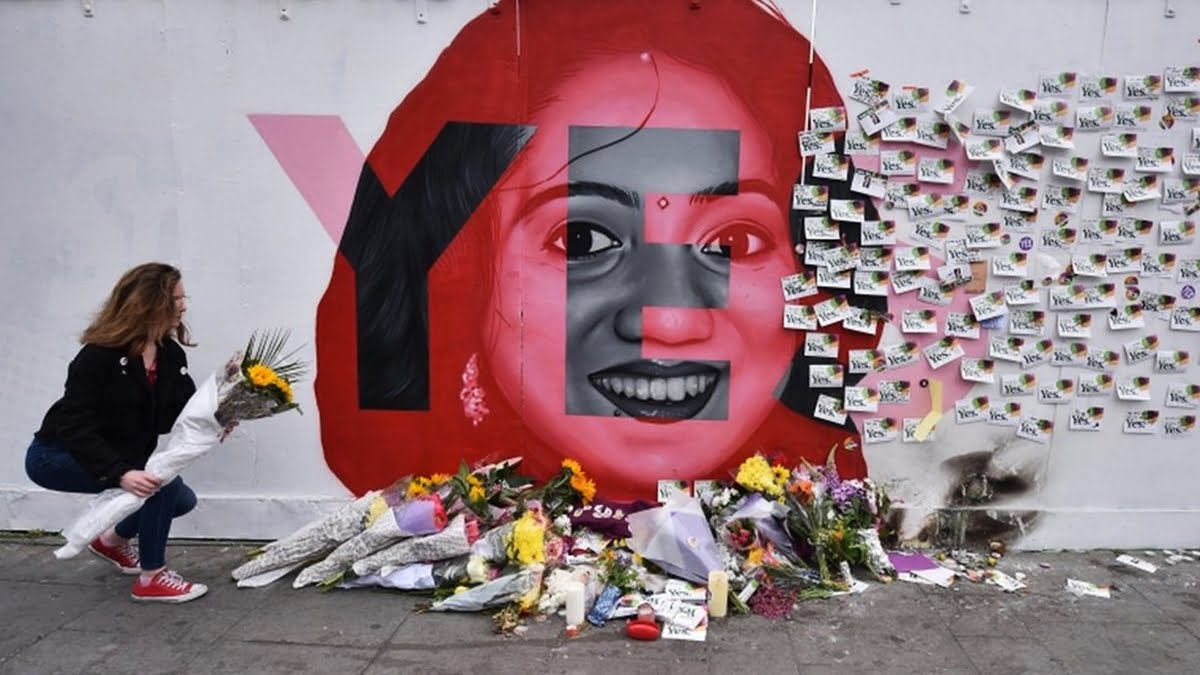The mass media plays an integral part in providing context for public opinion. Newspapers, articles, magazines, cinema, television, etc. may offer a discursive space in which readers can converse with an ‘imagined community.’ At the same time, misrepresentations lead to confused narratives and distorted opinions that could further lead to discreditations.
As we know, the mainstream media reporting around abortion is often unhealthy and the media gatekeeping around the whole phenomena narrows it down to a noxious narrative for abortion seekers. This largely affects the opinion of the masses and put abortion seekers in negative light which furthers the possibilities of prejudice, otherisation or discrimination against them.
Mainstream media reporting around abortion is often unhealthy and media gatekeeping around the whole phenomena narrows it down to a noxious narrative for abortion seekers. This largely affects the opinion of masses and put Abortion seekers in a negative light which furthers the possibilities of prejudice, otherisation or discrimination against them.
Television story lines are way more dramatic and distorted than real life and abortion story lines are no exception. When it comes to Indian TV/Cinema, negative characterisation (showing career oriented women as abortion seekers such as in 2004 movie Aitraaz), characterisation of young women as immature or naive (movies like Kya Kehna and Salaam Namaste), portrayal of sexual freedom as an erroneous act, and interference with future opportunities like in Zeher and Aitraaz are the dominant forms of representation.

Also read: Sensationalist Portrayal Of Abortion: Another Example Of Moral Policing
To simply raise the question of abortion isn’t appropriate if women are going to be talked over or spoken for. Like in the case of Zindagi Ke Crossroads, where reproductive choices were discussed as a matter of public opinion. It makes viewers, who ideally should be bystanders, think they have to step in to stop this “cold-blooded murder” from happening. These fictional characters with such portrayals can skew perceptions of actual women seeking abortion, which not only contribute to the ongoing abortion stigma but also glorify it further.
There’s also a huge assumption that if they abort, they may miss their only chance to have a child. Such framings are concerning because they imply that not having children is the “ultimate price” that women might pay for anything. There are hardly any alternative representations of women who do not want to have children but can still have a happy and healthy family life with their choices, which also ignores the complexities of a situation in which any woman might find herself, namely, facing a pregnancy with which she is unable to cope.
Since, the media plays a significant part in shaping public perceptions of health issues, abortion is mostly found to be presented in extreme scenarios using predominantly negative language as discredited social practices. The majority of negative feedback focuses on women’s “bad choices” about sexual practices, in which they are held accountable for having to need abortion and the “choices” that led to that point, whereas men are not held accountable. Such portrayals of abortion seekers cast doubt on the set of values linked with this ostensible “lifestyle choice”, fueling the stigmatisation process.
Many studies have found that media coverage is one of the most effective indicators of public opinion on national and local policy issues. It is therefore important that media rather focuses on how authorities refuse to make abortion safe, forcing women to turn to unsafe abortion practices or life-threatening options in extreme cases. Concerns about “judgement,” “isolation,” and “society censure,” as well as a “need for secrecy” and a low expectation of “social support” for their decision, are all major variables in bad psychological outcomes following abortion, as abortion and motherhood are presented in oppositional terms.
According to a research on the abortion stigmatisation by Cult Health Sex, “Cases are often dramatised to make stories newsworthy, sometimes unintentionally repeating misconceptions around abortion. Ill-informed media stories can eclipse the truth about abortion in public and political arenas.”
One in four women globally will have an abortion in her lifetime (W.H.O.) and the right to abortion is still not accessible to a large section of people despite upgradation in laws, for the shell of cultural appropriation serves as an impenetrable ceiling for now.
Also read: Is Media Channeling The Right Information On Abortion?

When the media’s focus is honest and accurate, it has the ability to elicit global outrage, such as when the media coverage of Savita Halappanavar’s death in 2012 sparked global outrage. She was denied an abortion in Ireland despite significant pregnancy difficulties. Public outrage over this case helped mobilise people and allies which led to larger protests to demand for a referendum on Ireland’s restrictive abortion laws, which has been reformed since then. More and more media on emerging digital news platforms in the last few years have framed it as a legitimate choice with context to the abortion laws in India, yet there is a need to challenge the inevitable stigmatisation and to encourage positive framings of abortion in context to reproductive rights and individual’s life choices.
As the abortion stigma is linked to its potential impact on access to services, knowing how to portray abortions on television and in the media can help healthcare advocates and providers identify and respond to the stigma.
Every year, millions of women around the world exercise their reproductive capacity and perform abortions. Despite this, other women continue to be reluctant in and be restricted from seeking the services, thus their ability to exercise their reproductive rights is limited. In addition, women who seek abortion feel the effects of stigma during the abortion process, no matter how it manifests locally. As the abortion stigma is linked to its potential impact on access to services, knowing how to portray abortions on television and in the media can help healthcare advocates and providers identify and respond to the stigma.
Featured image source: BBC.com




